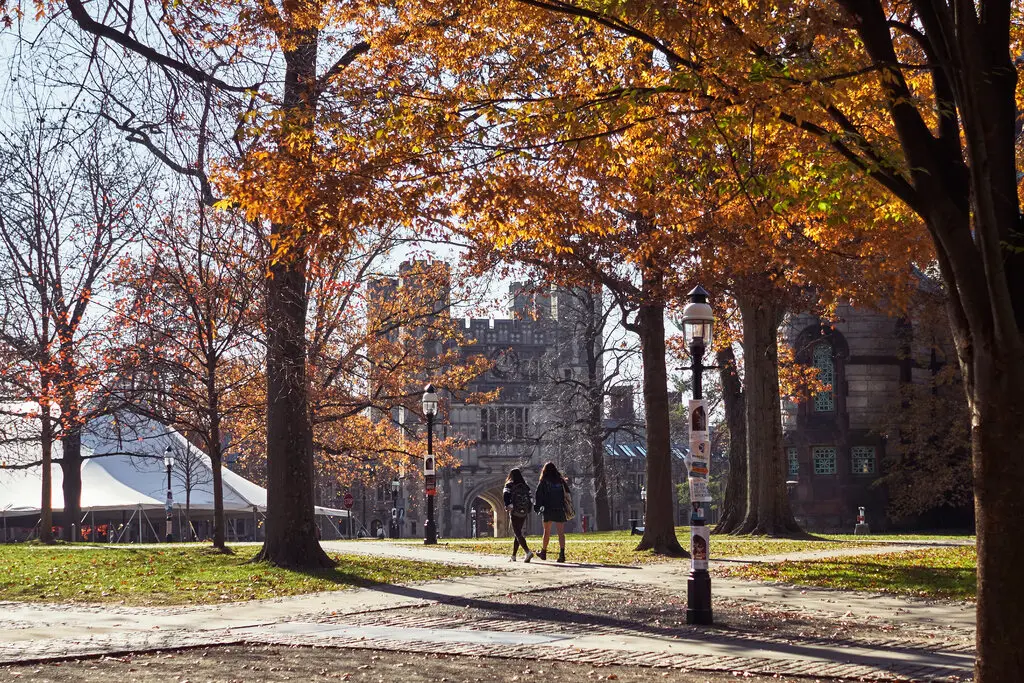
After months of upheaval on American college campuses, a sense of stability returned on Tuesday when U.S. News & World Report released its much-debated yet closely watched college rankings. Many leading institutions maintained their positions or ranked similarly to last year.
In the national universities category, Princeton retained its top spot, followed by the Massachusetts Institute of Technology and Harvard. Stanford, which shared third place last year, dropped to fourth. For national liberal arts colleges, Williams College was once again deemed the best, while Spelman College was recognized as the top historically Black institution.
The U.S. News rankings have long been contentious within American higher education. Over the years, the publisher has faced accusations of data manipulation, concerns about opaque methodologies, and debates about the appropriateness of ranking colleges at all.
Despite retiring its print newsmagazine in 2010, U.S. News continues to rely heavily on its rankings, which generate millions in licensing fees as universities seek to highlight their standings. The publisher maintains that its business relationships with colleges do not influence the rankings, asserting that it serves a public purpose by simplifying the complex landscape of college choices for students and parents.
While some view the rankings as useful tools in the college search process, university leaders often express disdain for their importance, and critics, including Education Secretary Miguel A. Cardona, argue that they foster an “unhealthy obsession with selectivity.” Many outside of U.S. News find the criteria behind the rankings to be unclear and frequently misunderstood.

Despite the criticisms, the rankings wield significant influence. U.S. News reports that its education website attracts over 100 million users annually, and universities are expected to promote their rankings through pamphlets, social media, and campus tours.
The rankings are structured to allow many institutions to claim accolades in various categories, with nearly 350 schools eligible to tout having one of the nation’s best undergraduate nursing programs this year.
The most notable changes in the rankings typically occur at the top, where consistency reigns. However, last year, U.S. News revamped its methodology for the first time since the rankings’ inception in 1983. In response to criticism that the previous model inadequately considered factors like social mobility, U.S. News adjusted the weight given to retention and graduation rates for students receiving need-based Pell grants. This led to substantial movements in rankings, with many public universities seeing significant upward shifts.
This year, U.S. News made fewer significant changes, noting that its “most significant” adjustment involved removing the six-year graduation rates of first-generation students from some calculations, citing concerns about standardization.
As a result, the latest rankings revealed a return to relative stability, at least until U.S. News alters its formulas again. Four institutions — the California Institute of Technology, Duke University, Johns Hopkins University, and Northwestern University — all climbed to a tie for sixth place. The University of Pennsylvania dropped four places to tenth, while Brown University also fell to a tie for thirteenth with Columbia University, which dropped one spot.
Columbia’s history with U.S. News has been particularly complicated; the university opted not to provide data directly to the publisher for undergraduate rankings after previously being accused of submitting inaccurate information. Last year, it fell from second to eighteenth place as a result of these controversies.
Despite the overall stability in the top rankings, some schools experienced significant changes. For example, Tulane University rebounded from a previous decline, improving by ten spots. Additionally, U.S. News reported that nine institutions rose by at least 40 places, though none reached higher than a tie for 209th.
Recent reports highlighted the ongoing debate over the validity of the rankings. An Art & Science Group study found that about 40% of students do not rely on rankings when choosing colleges, with only 3% considering them throughout their entire search. Similarly, Vanderbilt University was so dissatisfied with its five-spot drop last year that it commissioned an analysis of five ranking services, revealing flaws in their methodologies, including unreliable data and subjectivity.
Ranking publishers maintain that their guides are essential tools, but should not be the sole criteria in college selection. U.S. News strongly encourages users to consider its rankings alongside other information and in light of personal priorities when choosing where to apply and attend college.